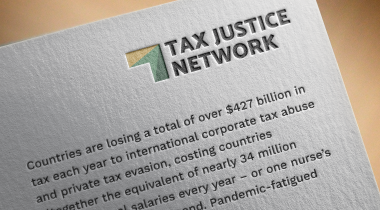
Andres Knobel ■ Not just about control: one share in a company should be enough to be a beneficial owner

We have written a lot about beneficial ownership registration, definitions, thresholds, complex structures, verification and so on. However, there seems to be a philosophical confusion about who should be considered to be (and registered as) a beneficial owner for a company, and what the consequences of that should be.
The Financial Action Task Force (FATF) in charge of anti-money laundering recommendations is the main source for “beneficial ownership” definitions. It is used as a basis or reference by the OECD Global Forum’s international standard, the Common Reporting Standard (CRS) for automatic exchange of information and by most countries beneficial ownership registration laws, such as the latest EU anti-money laundering directive (AMLD 5).
Based on the Financial Action Task Force’s recommendations, most countries use the “more than 25 per cent” ownership threshold where only individuals that own more than 25 per cent of a company or legal person are considered beneficial owners. Some countries have gone below that threshold, including Argentina (20 per cent), Uruguay (15 per cent) and Peru (10 per cent). We have often argued, however, that any individual holding at least one share of a company or legal person should be considered and registered to be a beneficial owner. Here’s why.
Ownership, control, or both?
The Financial Action Task Force contradicts itself as to whether beneficial ownership refers to “ownership” or to “control”, or to both.
The Financial Action Task Force’s glossary defines a beneficial owner as such:
Beneficial owner refers to the natural person(s) who ultimately owns or controls a customer and/or the natural person on whose behalf a transaction is being conducted. It also includes those persons who exercise ultimate effective control over a legal person or arrangement. (emphasis added)
The glossary thus includes three triggers for considering a natural person to be a beneficial owner:
- ultimate ownership (“ultimate” refers to indirect ownership),
- ultimate control or exercise ultimate effective control, or
- the person on whose behalf a transaction is being conducted
However, the Financial Action Task Force‘s Interpretative Note to Recommendation 10 only refers to the second trigger. It establishes a cascading test to identify beneficial owners for legal persons (which is used by most countries’ beneficial ownership registration laws) based on control:
(i) For legal persons:
(i.i) The identity of the natural persons (if any – as ownership interests can be so diversified that there are no natural persons (whether acting alone or together) exercising control of the legal person or arrangement through ownership) who ultimately have a controlling ownership interest in a legal person; and
(i.ii) to the extent that there is doubt under (i.i) as to whether the person(s) with the controlling ownership interest are the beneficial owner(s) or where no natural person exerts control through ownership interests, the identity of the natural persons (if any) exercising control of the legal person or arrangement through other means.
(i.iii) Where no natural person is identified under (i.i) or (i.ii) above, financial institutions should identify and take reasonable measures to verify the identity of the relevant natural person who holds the position of senior managing official. (emphasis added)
In essence, the Interpretative Note to Recommendation 10 refers to:
- Control via ownership (and proposes “more than 25 per cent” as a threshold to determine a “controlling ownership”)
- Control through other means
- If no one passes either threshold, then the Financial Action Task Force and most countries’ definitions require the senior manager to be identified
We disagree with Interpretative Note to Recommendation 10 and prefer the Glossary’s definition. Beneficial ownership should be about any individual who:
1. Owns,
2. has control or influence through means other than ownership (because all owners should already be covered by the first ownership trigger), or
3. on whose behalf a transaction is conducted or who benefits from the legal vehicle (this may be hard to prove or enforce, but this residual “anyone else who is relevant” should be kept to prevent future loopholes).
Consequently, anyone with only 1 per cent of a company’s shares, or even with only one share should be considered and registered as a beneficial owner, even though this person would have no control at all over the company.
“Control”, from our perspective, should be another trigger to cover people who are not already covered by the “ownership trigger” (eg someone who deliberately decides not to own shares so as not to be identified, but still has enough influence or control over a company). However, the “control trigger” should not replace nor add thresholds to the “ownership trigger”, as it currently does under the Financial Action Task Force’s Interpretative Note to Recommendation 10.
At the same time, the senior manager should never be considered a beneficial owner solely on the basis that nobody else could be identified as a beneficial owner. Based on our proposal, if beneficial ownership is firstly (but not only) about ownership, any company with at least one shareholder, partner or member would always be able to be identify at least one beneficial owner (even if they only hold one share).
Won’t many more people will be identified? Yes, and all the better for it.
If countries applied our proposal requiring anyone with one share to be considered a beneficial owner (Curacao already does this), many more people would be identified as beneficial owners. Many of them may have no control over the company or legal vehicle. But control is not the only point. Beneficial ownership is about transparency. It is about knowing all the individuals who are ultimately related to a legal vehicle, and who could be using it for illegal reasons, or who may be accumulating wealth through it.
Anyone with 0.1 per cent of Apples shares clearly has no control over the design of the new iPhone. However, their Apple shares are worth USD $220 million! Any researcher measuring inequality, or any authority fighting money laundering or tax evasion on income, capital gains or wealth taxes may want to know who this person is.
Being identified as a beneficial owner gives the person no extra right to dividends or voting power. It should only mean: “you either own or control this legal vehicle, and that’s why you are identified”.
For those who may think this is too radical, it’s worth remembering that this all-encompassing approach to recognition already applies to legal owners of companies and to beneficial owners of trusts.
In the case of a company, all shareholders have to be identified as legal owners, even those with only one share.
In the case of trusts, the Financial Action Task Force’s Interpretative Note to Recommendation 10 establishes that all the parties to a trust have to be identified as a beneficial owners (without applying any thresholds): all settlors, trustees, protectors and beneficiaries, regardless if the trust is irrevocable, or discretionary.
No extra costs (for most people)
This may sound like a phony commercial, but it is possible to lower beneficial ownership thresholds to eventually cover many more individuals, without adding extra costs for most people.
If John and his business partner Paul own a company or partnership to run a legitimate business, they most likely own the company directly without adding layers of offshore entities and trusts. This means they should already be registered as the beneficial owners (supposing they each own 50 per cent). Lowering the threshold to one share, changes nothing for them. It’s still only the two of them who would have to register as beneficial owners.
These lower thresholds would affect only those who create complex structures, adding offshore layers of entities, combining trusts and companies, or establishing circular ownership schemes to remain below the beneficial ownership definitions’ current thresholds.
In other words, for people with simple ownership structures, these lower thresholds would change nothing. Only those who until now manage to remain hidden would now have to be identified.
Related articles
One-page policy briefs: ABC policy reforms and human rights in the UN tax convention

The Financial Secrecy Index, a cherished tool for policy research across the globe

When AI runs a company, who is the beneficial owner?
Insights from the United Kingdom’s People with Significant Control register
13 May 2025

Uncovering hidden power in the UK’s PSC Register

New article explores why the fight for beneficial ownership transparency isn’t over
Asset beneficial ownership – Enforcing wealth tax & other positive spillover effects
4 March 2025

Tax Justice transformational moments of 2024

The Tax Justice Network’s most read pieces of 2024



With these type of articles on ‘transparency’ of minority shareholders for the public you are supporting BigTech and large governments in creating a surveillance society in which people do not have any privacy anymore and can not take any (cyber)security measures. Your opinions are based on a naive idea on humanity.
You are harming decent people with these kind of opinions. The data thieves of the world love you because you are supporting them in a great way.
If people are harmed you should take all financial and other responsibilty and compensate them.
Clara pero me confunde!!! si tengo acciones de Molino Rio de la Plata o del Banco Galicia, osea 1 acción, soy considerado beneficiario final?